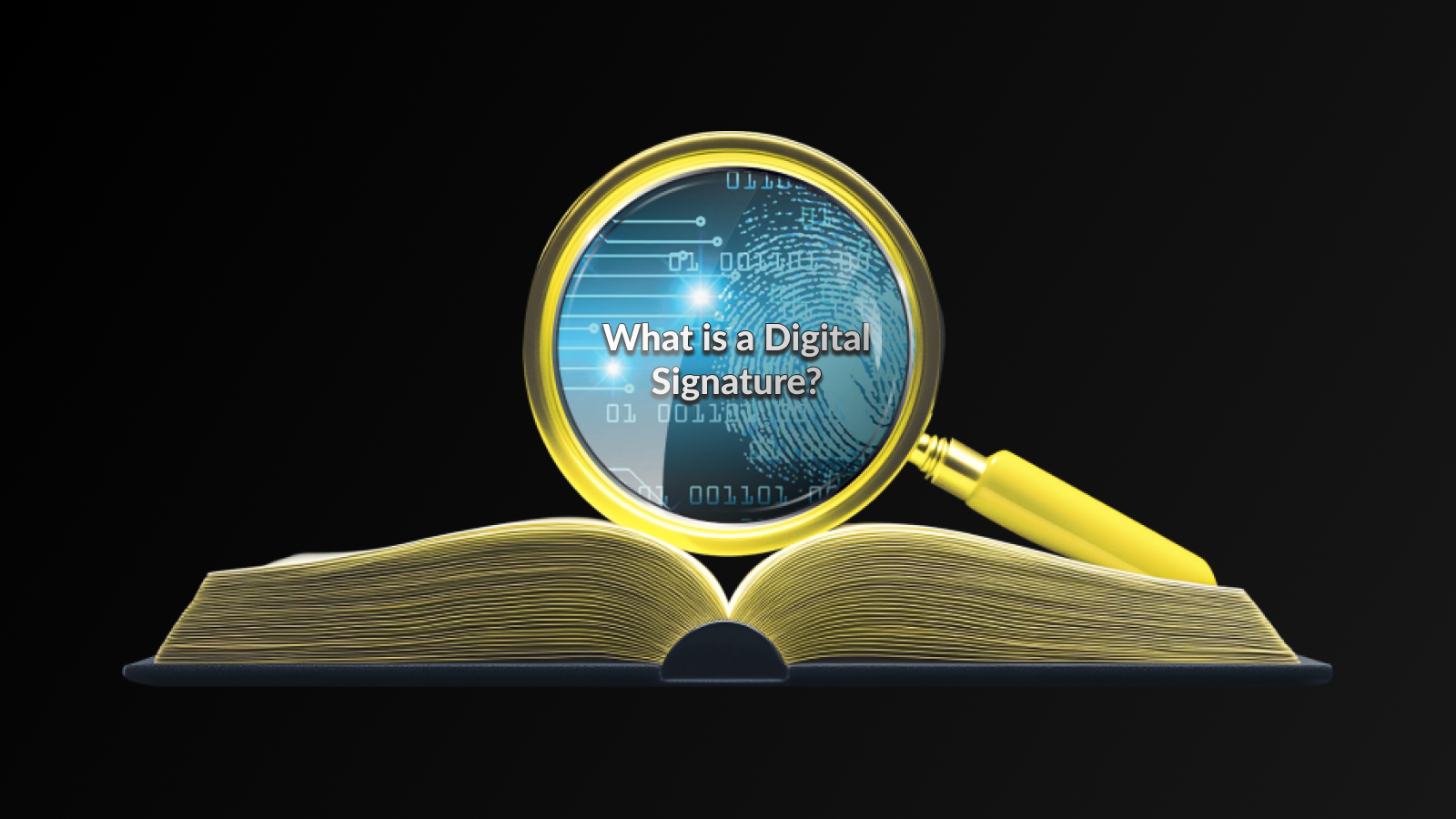Introduction
In the rapidly evolving landscape of technology, the concept of a Digital Signature in Blockchain has emerged as a crucial component in ensuring the authenticity and security of digital transactions. Digital signatures serve as the digital equivalent of handwritten signatures or stamped seals, providing a means of verifying the integrity and origin of data transmitted within a blockchain. This is particularly important in an environment where trust is key, yet the actors involved may not have a prior relationship.
By employing cryptographic techniques, a Digital Signature in Blockchain ensures that any alterations to the signed document are detectable, thereby maintaining the integrity of the information shared among participants. This capability is essential in various applications, from validating transactions to ensuring compliance with regulations and standards.
Moreover, the implementation of digital signatures alongside blockchain technology enhances transparency and fosters trust among users. As each transaction is time-stamped and linked to others in a robust chain, it becomes nearly impossible for malicious entities to alter transaction records without being flagged, ultimately promoting a secure environment.
Thus, the role of digital signatures in blockchain is pivotal, not only for authentication but also for facilitating smooth and secure interactions in an increasingly digital world.
How Do Digital Signatures Work?
The process behind a Digital Signature in Blockchain involves encryption and hashing to ensure the integrity, authenticity, and non-repudiation of a digital message or document. When a sender wishes to sign a document, they generate a unique hash of the content using a cryptographic hash function. This hash acts as a fingerprint of the document.
Following the creation of the hash, the sender encrypts it with their private key, resulting in the Digital Signature in Blockchain. This encrypted hash, along with the original document, is then sent to the recipient. By providing both the document and the signature, the sender allows the recipient to verify that the document has not been altered during transmission.
The recipient, upon receiving the document and the signature, performs a hash operation on the original document to generate their own hash. They then decrypt the sender’s signature using the sender’s public key, which uncovers the original hash created by the sender. If both hashes match, it means that the document is intact and genuinely signed by the sender.
This robust mechanism ensures that tampering with the document would result in a mismatch of the hashes, thereby alerting the recipient of any alterations. Consequently, the Digital Signature in Blockchain plays a vital role in securing digital communications, particularly in decentralized applications and transactions.
Benefits of Digital Signatures in Blockchain and Cryptocurrency
The integration of Digital Signature in Blockchain technology has brought numerous advantages that enhance security and streamline processes. One of the primary benefits is the increased security it offers. Digital signatures use cryptographic techniques, ensuring that only the intended parties can authorize transactions, thereby reducing the chances of fraud and tampering.
Moreover, the transparency provided by Digital Signature in Blockchain improves trust among users. Each transaction is recorded on the blockchain, allowing anyone to verify its authenticity without compromising sensitive information. This level of transparency not only boosts confidence but also mitigates potential disputes.
Another significant advantage is the efficiency of executing agreements. Traditional methods often require physical signatures and can be time-consuming. With Digital Signature in Blockchain, contracts can be signed electronically in real time, expediting processes and reducing operational costs.
The irrevocability of digital signatures enhances accountability. Once a transaction is signed and recorded on the blockchain, it cannot be altered without the consensus of all parties involved. This characteristic ensures that all actions within the blockchain are final, increasing overall trust in digital dealings.
Use Cases of Digital Signatures in Blockchain
Digital signatures play a critical role in enhancing trust and security within the decentralized environment of blockchain technology. Here are some prominent use cases of digital signature in blockchain:
- Smart Contracts: Digital signatures are fundamental in executing smart contracts automatically. They ensure that all parties involved in the contract are identifiable and that the agreement is tamper-proof.
- Identity Verification: The use of digital signatures in blockchain helps in establishing and verifying identities, making it easier to authenticate users without relying on a central authority.
- Supply Chain Management: With digital signatures, stakeholders can track products through the supply chain, ensuring the authenticity and integrity of goods as they move from manufacturers to consumers.
- Voting Systems: Blockchain-based voting systems incorporate digital signatures to verify voter identities, ensuring that each vote is legitimate and has not been altered.
- Financial Transactions: In cryptocurrency transactions, digital signatures confirm the origin and integrity of the transactions, preventing fraud and ensuring that funds can only be moved by the rightful owner.
- Document Management: Digital signatures on documents stored in blockchain secure sensitive data, confirming that no alterations have been made since the document was signed.
- Healthcare Records: With the increasing adoption of blockchain in the healthcare sector, digital signatures help secure patient health records and control access to sensitive information.
These applications highlight how crucial a digital signature in blockchain is for maintaining security, transparency, and efficiency across various industries.
Challenges and Limitations of Digital Signatures
While Digital Signatures in Blockchain offer remarkable advancements in security and efficiency, they are not without their challenges and limitations. Understanding these drawbacks is essential for organizations and individuals considering the implementation of digital signature technology.
1. Legal Uncertainty
In some jurisdictions, the legal status of digital signatures may not be clearly defined. This ambiguity can lead to challenges in enforcing agreements secured with digital signatures, thereby affecting their credibility and usage.
2. Technological Barriers
Implementing digital signatures requires technological infrastructure, such as cryptographic algorithms and proper key management systems. Organizations lacking robust IT frameworks may face difficulties in adopting this technology effectively.
3. User Acceptance
User trust and understanding of digital signatures can be barriers to wide-scale adoption. Many individuals and businesses may still rely on traditional signatures, leading to resistance against new technologies like Digital Signatures in Blockchain.
4. Security Concerns
Though digital signatures provide enhanced security, they are not entirely immune to attacks. Cyber threats, such as phishing and key compromise, pose risks that can undermine their effectiveness. Ensuring the integrity of the underlying systems is crucial in mitigating these risks.
5. Scalability Issues
As transactions increase, scalability may become an issue. The process of verifying digital signatures can become increasingly complex and time-consuming, particularly in high-volume environments.
Overall, while the advantages of Digital Signatures in Blockchain are significant, awareness of these challenges is crucial for successful integration and use. Organizations must weigh these limitations and prepare accordingly to harness the full potential of digital signatures.
Frequently Asked Questions
What is a digital signature?
A digital signature is a cryptographic mechanism that ensures the authenticity and integrity of digital messages or documents, similar to a handwritten signature but more secure.
How does a digital signature work?
A digital signature works by using a public key infrastructure (PKI) where a signer uses a private key to create a unique signature for a document, which can then be verified by anyone using the corresponding public key.
What are the benefits of using digital signatures?
The benefits of digital signatures include enhanced security, faster document processing, reduced fraud, and compliance with legal standards such as eIDAS and the U.S. Electronic Signatures in Global and National Commerce Act.
Are digital signatures legally binding?
Yes, digital signatures are legally binding in many jurisdictions, provided they comply with relevant regulations and standards, making them equivalent to traditional handwritten signatures.
What technologies are used to create digital signatures?
Digital signatures typically use technologies such as asymmetric cryptography, hashing algorithms, and digital certificate authorities to create a secure signing process.
Can digital signatures be forged?
While it is incredibly difficult to forge digital signatures due to the cryptographic techniques involved, vulnerabilities may exist if the private key is compromised or if inadequate security practices are followed.
What industries commonly use digital signatures?
Digital signatures are commonly used in various industries, including finance, healthcare, legal, and real estate, for processes such as contract signing, secure transactions, and regulatory compliance.
Disclaimer
This article is for informational purposes only and does not constitute financial, investment, or legal advice. Digital signatures and blockchain-based technologies carry risks related to key management, cybersecurity, and regulatory compliance. Always conduct your own research and consult with a licensed professional before engaging in crypto-related activities. Darkex does not guarantee the accuracy or reliability of third-party information referenced in this article.
Click for more educational content



